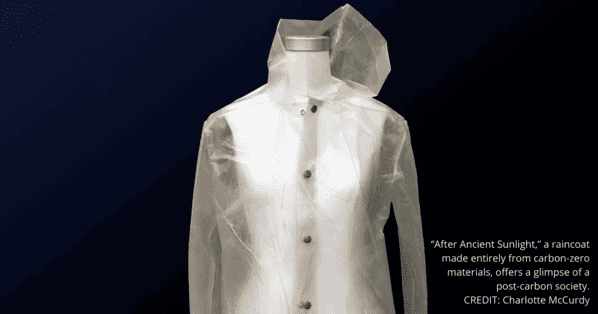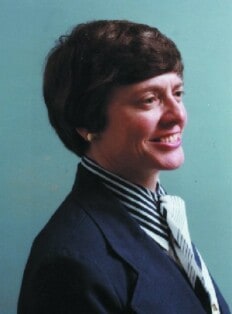
The camera in your doorbell owes a debt of thanks to African American inventor Marie Van Brittan Brown (1922–1999). A native of Jamaica, Queens, New York, Brown worked as a nurse, often coming home late at night. Her husband, Albert, was an electronics technician with an irregular schedule. Often, one of them was home alone. Concerned about her neighborhood’s high crime rate and slow police response, Brown set about solving the problem of seeing who was at the door before she answered it.
In the mid 1960s, assisted by her husband, she invented a system of four peepholes, a sliding camera, television monitors, and a two-way microphone that constituted a wireless, closed-circuit television (CCTV) system for home surveillance. The peepholes were set in the door at ascending heights, allowing the camera to slide from one to the other to capture images of people of all heights. Monitors in the apartment picked up the images through wireless radio.
With two-way voice communication with the person outside, this system could not only contact police with the push of a button, but another button remotely controlled the door locks. All together, it formed the basis of systems still in use today, everywhere from convenience stores and banks to office buildings and apartment complexes.
The Browns received a patent for their invention in 1969. Soon after, Brown was interviewed by The New York Times, saying, “A woman alone could set off an alarm immediately by pressing a button, or if the system were installed in a doctor’s office, it might prevent holdups by drug addicts.”
Brown is widely credited for creating CCTV, and received an award from the National Scientists Committee for her work. Her invention has been cited in 32 subsequent patent applications, one as recently as 2013, for a wireless entrance communication device.
“Invisible glass” and monomolecular films
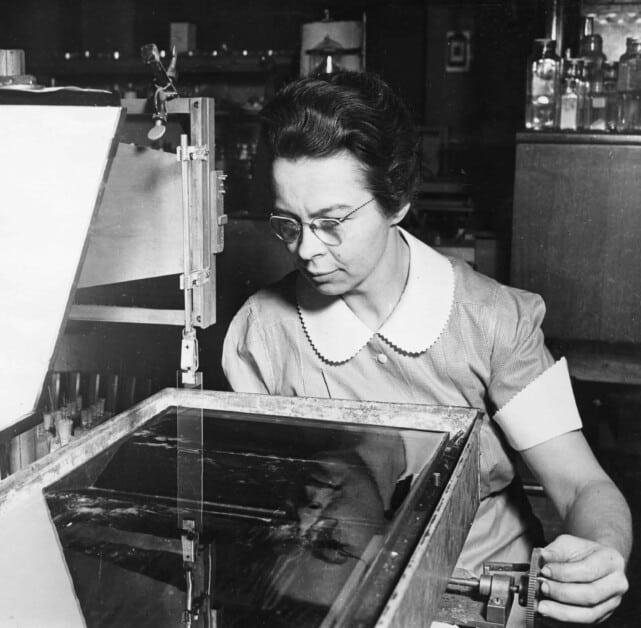
The woman engineer and physicist largely responsible for the nonglare transparency of our eyeglasses, camera lenses, windshields, windows, and telescopes was born in Schenectady, New York, in 1898. Katharine Burr Blodgett, Ph.D., followed her early love of physics to Bryn Mawr, earned an M.S. in chemistry from the University of Chicago, then became the first woman to receive a Ph.D. in physics from Cambridge University. She spent most of her career at General Electric Company (GE), where she was the company’s first woman scientist.
Collaborating with Irving Langmuir, Ph.D., Dr. Blodgett became an expert in monolayer thin films. By 1938, she had invented nonreflecting glass, coating its surface with a barium stearate film only 44 molecules thick, by stacking layers one-molecule thick, one at a time. Where typical glass is visible because light reflects from its surface, Dr. Blodgett’s coating, whose thickness was one-fourth the wavelength of white light, rendered the glass “invisible,” while allowing 99% of light to pass through. She followed this by developing a “color gauge” to measure the coatings’ thickness within one-millionth of an inch, earning six U.S. patents for technology that is still used today.
Her groundbreaking coating, essentially a transparent soap film, inspired others to experiment with harder coatings that would adhere permanently, sparking a whole new way to improve lens quality in movie cameras, microscopes, and later, computer screens. Drs. Blodgett and Langmuir continued their long collaboration, developing, among other things, protective smokescreens for troops in combat and methods for deicing aircraft that saved many lives in World War II.
Among Dr. Blodgett’s many awards was the 1951 American Chemical Society’s Francis P. Garvan Medal for her research in surface chemistry. She died in 1979 at the age of 81, and was inducted into the National Inventors Hall of Fame in 2007.
Getting the moon shot
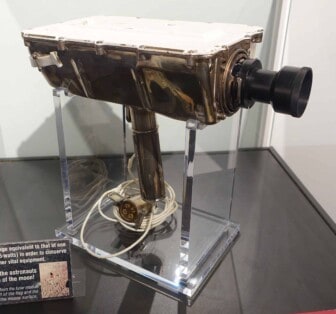
On July 20, 1969, at 9:30 p.m. Houston time, astronauts Neil Armstrong and Buzz Aldrin, Sc.D., set foot on the moon, planting an American flag in the lunar dust. Back on Earth, an estimated 600 million people watched, rapt, as history unfolded on live television.
Getting a television camera to work on the moon meant subjecting it to the same rigorous safety and reliability testing as every rivet, tube, and wire on the Apollo spacecraft — and on a tight schedule. It had to tolerate extreme temperature swings, from 121 °C (250 °F) in daylight to −157 °C (−251 °F) in shade. Power could not exceed 7 watts, and its signal had to fit into the narrow bandwidth on the lunar module’s S-band antenna.
Key to the lunar camera’s safety and reliability was engineer and supervisor Naomi McAfee, F.SWE, who worked with NASA, which had commissioned Westinghouse to develop the camera. In a 2010 interview for the IEEE History Center, she discussed the challenges her team faced. “The thing we were looking at was, can we make it reliable so it will do what they want it to do? How do you seal it to make sure there is no out-gassing when you get it into the capsule? How do you screen the parts to make sure they will work for the period of time that you want?”
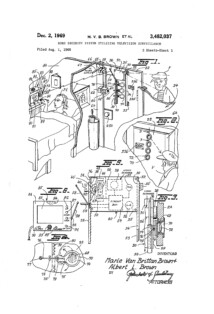
McAfee noted that the programs were challenging because the technology was so new. “You had to develop new techniques, new ways to predict what was going to happen. Those things were all fun, a lot of fun to do.”
The lunar camera came in at 3.3 kg (7.3 lbs.), pulled 6.5 watts of power, and was equipped with interchangeable wide-angle and lunar day lenses. It filmed at 10 frames per second in monochrome.
“It’s hard to describe the anticipation and the anxiety that one felt hearing them land on the moon, and then knowing that they were going to be coming out, and that when they did step onto the moon, that that camera would take the pictures and transmit them back to the Earth,” McAfee said in a 2003 SWE interview. “Just waiting to see if it would work created quite a bit of stress. And when it worked, it was sort of like a big ‘whew’ from everybody who was there.”
McAfee also worked on environmental measurements experiments, including the measurement of micrometeorite bombardment on objects in space; her research informed the design of the Apollo spacecraft’s hull. Her team’s work was so robust that results of its two-year research program are still in use, 50 years later.
“We could see that what we did today, 10 years in the future people would be doing things like putting it into cars, toasters, TV sets,” McAfee said in a 2016 SWE oral history. “I think the greatest satisfaction in the career that I had was the fact that we were always on the leading edge of technology.”






